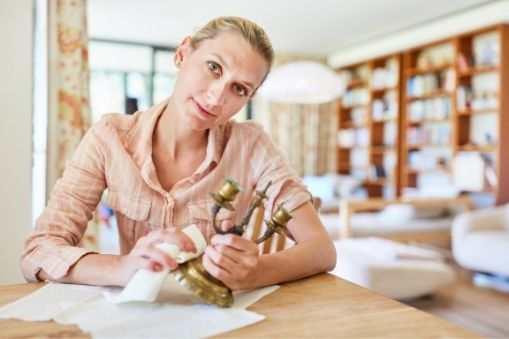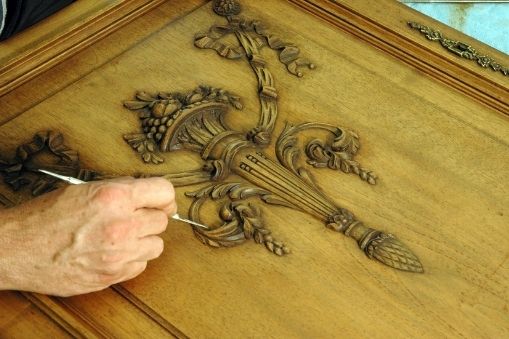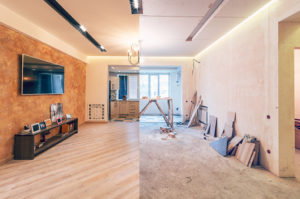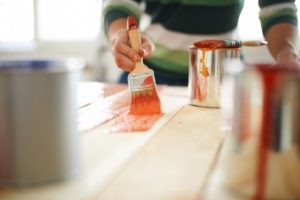An antique can be a piece of furniture or ornament that was handcrafted many years ago. It is the distinct print of the unique craftsmanship that makes an antique quite important. Many people think that antiques are something that hold lots of monetary value.
While this may be the case, antiques are usually passed down from generation to generation in a family. In reality, the true value of an antique piece is in the sentimentality that it has for many people.
An antique is an anchor point in history that reminds people where they have been, what their families have done and accomplished, and what “family” means to them.
As such, if you ever find yourself in possession of a passed down antique that is damaged, the first instinct should not be to throw away or sell the piece. Instead, the first thing you should look at doing is antique restoration.
Antique restoration, much like furniture restoration, is the act of restoring the piece to what it once was when it was newly created. Furthermore, it can also be the act of preserving the antique piece or preventing any deterioration from occurring.
In order to guide you with preserving or restoring your antiques, we at Restore with Design have prepared the do’s and don’ts of antique restoration.
Antique Restoration Do’s

Clean Green
If you are looking to clean your antiques, then you have to remember a few things regarding the cleaning agents that you’ll be using.
For starters, if you want to clean up your antiques, make sure that the cleaning agents that you use are devoid of any chemicals that could deteriorate the finish of the antique.
Instead, you can just use water and a soap solution that isn’t too strong, but not too weak either. Using these cleaning agents will allow you to keep the finish intact.
After washing, start polishing your antique with a lint cloth. This will yield the best results and will provide a good look and shine to the antique. If there are places that are hard to reach on your antique, you can opt to use a soft toothbrush.
One thing to remember about cleaning antiques though is that the ageing factor adds a special something to the piece. Thus, you shouldn’t go overboard with the cleaning. This is especially the case if the antique is quite aged.
Consider a Fresh Coat of Paint
If you have the technical know-how and the time to work on restoring your antiques yourself, then you shouldn’t underestimate the power of a fresh coat of paint.
Applying paint to your antique is wholly dependent on the type of piece that you have. Antique restoration experts have stated that if your antique is made of Melamine or has lacquer surfaces, then the paint will have a hard time sticking to those surfaces.
The same can be said for those antiques with ornate carvings on it. Attempting to paint it yourself can leave multiple patches of paint that won’t look like it was when it was newly crafted.
Take it to the Pros
Furniture and antique restoration has quickly become a hobby for many people around the world. While there is nothing wrong with trying your hand at these services, it wholly depends on your technical skills, knowledge, and the goal you want to achieve.
If you are pretty new to the restoration game, you are only starting to hone your skills, and you want to restore the antique to like-new, then maybe the do-it-yourself approach is not for you.
Thankfully, there are professionals out there that can help you out with your antique restoration needs.
If you aren’t sure how things work, or you aim for durability and a like-new finish, then approach a person or company that has extensive experience with antique restoration. They will ensure they do the job well and restore it to the level of workmanship that you will be satisfied with.
Antique Restoration Don’ts

Don’t Over-sand
Antiques can come in many different shapes and sizes. These also include houses!
If you live in such a house and are working on restoring it, refrain from over-sanding the wooden floor boards of the house. Doing so will make the boards weak and even cause cracking of the wood.
Moreover, if you continually sand the floors, you’ll run the risk of the grooves breaking off. This will effectively weaken the durability of the floorboards.
You can opt to use a vibrating floor sander to bring out the best in your wooden floors without taking away from its durability. A drum sander should be avoided at all costs.
Careful with Waxing
For varnished coatings, the best way to ensure that it maintains its original luster is by applying coats of wax. We’d recommend furniture paste wax as it will last for a long time and protect our antique from dirt and moisture.
When applying the wax though, be sure to not overdo it. Using too much wax would take away from the antique’s finish.
In between your waxing, regularly dust the piece with a soft lint-free cloth. If a dry rag were used, it could cause some unwanted scratches.
You’ll also want to ask about the finish of your antique. If it is a deteriorating finish, then you may want to not use wax as it may also affect the finish in a negative way. Silicone polishes are to be avoided as it goes in the finish and may cause problems for any future repairs or restoration.
Don’t Think that the Antiques are a Thing of the Past
The final tip we’ll give you is don’t think that everything about your antique is a thing of the past. Many antique owners have a mindset that parts and components of your antique are no longer being made. That couldn’t be farther from the truth.
If you go online to a number of online stores, you can easily find any parts or components that will help you with the restoration process of your antiques.
Restore and Revitalize
An antique is something that has survived for many years. As such, it has probably lived through multiple years and has been in various memories of your family members.
The best thing you can do for your antiques is to restore them well – possibly with the help of professionals – in order to revitalize their look and ensure that they continue to survive for the future generations.
You might also wanna check Everything You Need to Know About Furniture Refinishing and Restoration.




